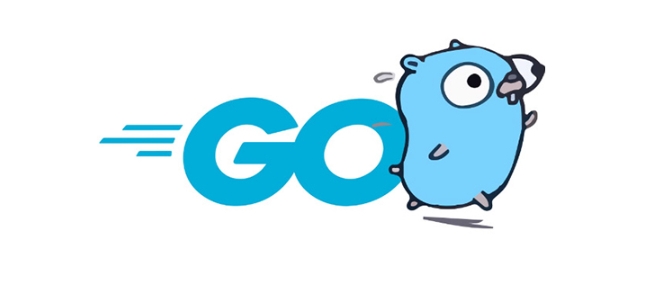Adjusting Go's garbage collector (GC) can be achieved through the following steps: 1. Understand the current GC behavior, analyze the GC frequency, pause time and heap size changes through the GODEBUG=gctrace=1 and pprof tools; 2. Adjust the GOGC parameters to control the GC frequency, such as set to 200 to reduce the number of GCs to increase throughput, or set to 50 to increase the recycling frequency to reduce latency; 3. Use GOMEMLIMIT to control the heap memory limit (Go 1.19), such as set to 8GB to limit overall memory usage; 4. Reduce object allocation, reduce GC pressure by multiplexing objects in sync.Pool, avoiding the creation of variables in loops, and pre-allocating slice capacity. The core of tuning is to understand application characteristics and select appropriate strategies. Reducing allocation is often more effective than parameter adjustment.

Adjusting Go's garbage collector (GC) does not actually require too complicated operations, especially when the default configuration is already very efficient. However, if your application has special needs, such as latency sensitivity, memory limitation or high throughput requirements, proper tuning of GC can bring real benefits.

Below are some common scenarios and corresponding tuning suggestions.
Understand current GC behavior
Before doing any tuning, you must first understand the current GC behavior of your program. It can be done by:

- Check out
GODEBUG=gctrace=1output, which prints statistics after each GC cycle is over. - Use the pprof tool to analyze GC frequency, pause time (STW), and heap size changes.
- Observe whether the GC pause affects your service response delay.
This data can tell you whether the GC is currently a performance bottleneck and whether further tuning is necessary.
Adjust GOGC parameters to control GC frequency
Go's GC is designed throughput first by default, but you can control its behavior by setting the environment variable GOGC .

-
GOGC=100is the default value, indicating that the next round of GC is triggered when the heap grows to 100% after the last GC. - If you want to reduce the number of GCs and increase the throughput, you can set it to a higher value, such as
GOGC=200. - If you pay more attention to low latency, you can lower this value, such as
GOGC=50, so that GC is more frequent, but there is less data recycled each time.
Note: This parameter only affects the trigger frequency of concurrent GC in the background and will not significantly change the operating mechanism of GC.
Controlling heap memory upper limit (Go 1.19)
Starting from Go 1.19, an experimental memory limiting function ( GOMEMLIMIT ) has been introduced, allowing you to set the maximum memory used by the entire process (including heap, stack, code segment, etc.).
- Setting method:
GOMEMLIMIT=8589934592(unit is bytes, for example 8GB). - Function: Prevent memory usage from growing unlimitedly, especially suitable for container environments or resource-constrained deployment scenarios.
- Notes:
- It is not recommended to set it too tightly, otherwise it may lead to frequent GC or OOM.
- It can be used with
GOGC=offto allow GC to be scheduled entirely according to memory restrictions.
This approach is suitable for services that are sensitive to total memory, such as microservices or edge computing nodes.
Reduce object allocation and fundamentally reduce GC pressure
Another idea of tuning GC is to "not create problems" - reduce unnecessary memory allocation:
- Reuse objects, such as using sync.Pool to cache temporary objects.
- Avoid creating temporary variables in loops.
- Try to preallocate slice capacity to avoid dynamic expansion.
- Use object pools to manage connections, buffers and other resources.
You can use go build -gcflags=-m to view escape analysis to find out which variables are allocated to the heap.
Basically that's it. Tuning Go's GC does not require too many fancy operations. The key is to understand the behavioral characteristics of the application and then choose the right strategy. Sometimes, reducing allocations can solve the problem better than adjusting parameters.
The above is the detailed content of How to tune the Go garbage collector (GC)?. For more information, please follow other related articles on the PHP Chinese website!

Hot AI Tools

Undress AI Tool
Undress images for free

Undresser.AI Undress
AI-powered app for creating realistic nude photos

AI Clothes Remover
Online AI tool for removing clothes from photos.

Clothoff.io
AI clothes remover

Video Face Swap
Swap faces in any video effortlessly with our completely free AI face swap tool!

Hot Article

Hot Tools

Notepad++7.3.1
Easy-to-use and free code editor

SublimeText3 Chinese version
Chinese version, very easy to use

Zend Studio 13.0.1
Powerful PHP integrated development environment

Dreamweaver CS6
Visual web development tools

SublimeText3 Mac version
God-level code editing software (SublimeText3)

Hot Topics
 Understanding the Performance Differences Between Golang and Python for Web APIs
Jul 03, 2025 am 02:40 AM
Understanding the Performance Differences Between Golang and Python for Web APIs
Jul 03, 2025 am 02:40 AM
Golangofferssuperiorperformance,nativeconcurrencyviagoroutines,andefficientresourceusage,makingitidealforhigh-traffic,low-latencyAPIs;2.Python,whileslowerduetointerpretationandtheGIL,provideseasierdevelopment,arichecosystem,andisbettersuitedforI/O-bo
 Is golang frontend or backend
Jul 08, 2025 am 01:44 AM
Is golang frontend or backend
Jul 08, 2025 am 01:44 AM
Golang is mainly used for back-end development, but it can also play an indirect role in the front-end field. Its design goals focus on high-performance, concurrent processing and system-level programming, and are suitable for building back-end applications such as API servers, microservices, distributed systems, database operations and CLI tools. Although Golang is not the mainstream language for web front-end, it can be compiled into JavaScript through GopherJS, run on WebAssembly through TinyGo, or generate HTML pages with a template engine to participate in front-end development. However, modern front-end development still needs to rely on JavaScript/TypeScript and its ecosystem. Therefore, Golang is more suitable for the technology stack selection with high-performance backend as the core.
 How to build a GraphQL API in golang
Jul 08, 2025 am 01:03 AM
How to build a GraphQL API in golang
Jul 08, 2025 am 01:03 AM
To build a GraphQLAPI in Go, it is recommended to use the gqlgen library to improve development efficiency. 1. First select the appropriate library, such as gqlgen, which supports automatic code generation based on schema; 2. Then define GraphQLschema, describe the API structure and query portal, such as defining Post types and query methods; 3. Then initialize the project and generate basic code to implement business logic in resolver; 4. Finally, connect GraphQLhandler to HTTPserver and test the API through the built-in Playground. Notes include field naming specifications, error handling, performance optimization and security settings to ensure project maintenance
 How to install Go
Jul 09, 2025 am 02:37 AM
How to install Go
Jul 09, 2025 am 02:37 AM
The key to installing Go is to select the correct version, configure environment variables, and verify the installation. 1. Go to the official website to download the installation package of the corresponding system. Windows uses .msi files, macOS uses .pkg files, Linux uses .tar.gz files and unzip them to /usr/local directory; 2. Configure environment variables, edit ~/.bashrc or ~/.zshrc in Linux/macOS to add PATH and GOPATH, and Windows set PATH to Go in the system properties; 3. Use the government command to verify the installation, and run the test program hello.go to confirm that the compilation and execution are normal. PATH settings and loops throughout the process
 Resource Consumption (CPU/Memory) Benchmarks for Typical Golang vs Python Web Services
Jul 03, 2025 am 02:38 AM
Resource Consumption (CPU/Memory) Benchmarks for Typical Golang vs Python Web Services
Jul 03, 2025 am 02:38 AM
Golang usually consumes less CPU and memory than Python when building web services. 1. Golang's goroutine model is efficient in scheduling, has strong concurrent request processing capabilities, and has lower CPU usage; 2. Go is compiled into native code, does not rely on virtual machines during runtime, and has smaller memory usage; 3. Python has greater CPU and memory overhead in concurrent scenarios due to GIL and interpretation execution mechanism; 4. Although Python has high development efficiency and rich ecosystem, it consumes a high resource, which is suitable for scenarios with low concurrency requirements.
 Go sync.WaitGroup example
Jul 09, 2025 am 01:48 AM
Go sync.WaitGroup example
Jul 09, 2025 am 01:48 AM
sync.WaitGroup is used to wait for a group of goroutines to complete the task. Its core is to work together through three methods: Add, Done, and Wait. 1.Add(n) Set the number of goroutines to wait; 2.Done() is called at the end of each goroutine, and the count is reduced by one; 3.Wait() blocks the main coroutine until all tasks are completed. When using it, please note: Add should be called outside the goroutine, avoid duplicate Wait, and be sure to ensure that Don is called. It is recommended to use it with defer. It is common in concurrent crawling of web pages, batch data processing and other scenarios, and can effectively control the concurrency process.
 Evaluating Code Readability and Maintainability: Golang vs Python Perspectives
Jul 03, 2025 am 02:40 AM
Evaluating Code Readability and Maintainability: Golang vs Python Perspectives
Jul 03, 2025 am 02:40 AM
WhenchoosingbetweenGolangandPythonforcodereadabilityandmaintainability,thedecisionhingesonteampriorities.1.Golangoffersstrictconsistencywithminimal,opinionatedsyntaxandbuilt-intoolinglikegofmt,ensuringuniformcodestyleandearlyerrordetection.2.Pythonpr
 Go embed package tutorial
Jul 09, 2025 am 02:46 AM
Go embed package tutorial
Jul 09, 2025 am 02:46 AM
Using Go's embed package can easily embed static resources into binary, suitable for web services to package HTML, CSS, pictures and other files. 1. Declare the embedded resource to add //go:embed comment before the variable, such as embedding a single file hello.txt; 2. It can be embedded in the entire directory such as static/*, and realize multi-file packaging through embed.FS; 3. It is recommended to switch the disk loading mode through buildtag or environment variables to improve efficiency; 4. Pay attention to path accuracy, file size limitations and read-only characteristics of embedded resources. Rational use of embed can simplify deployment and optimize project structure.






